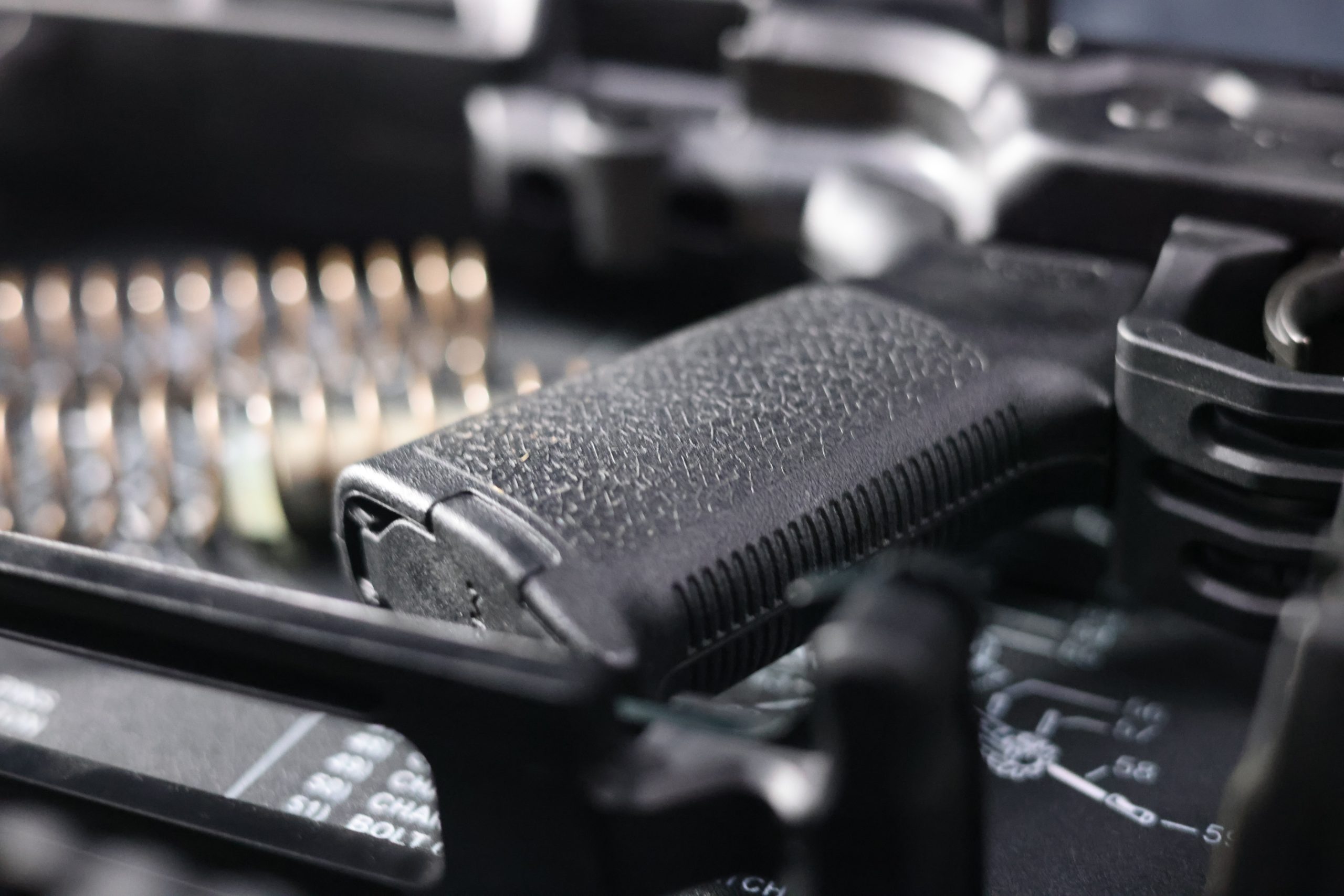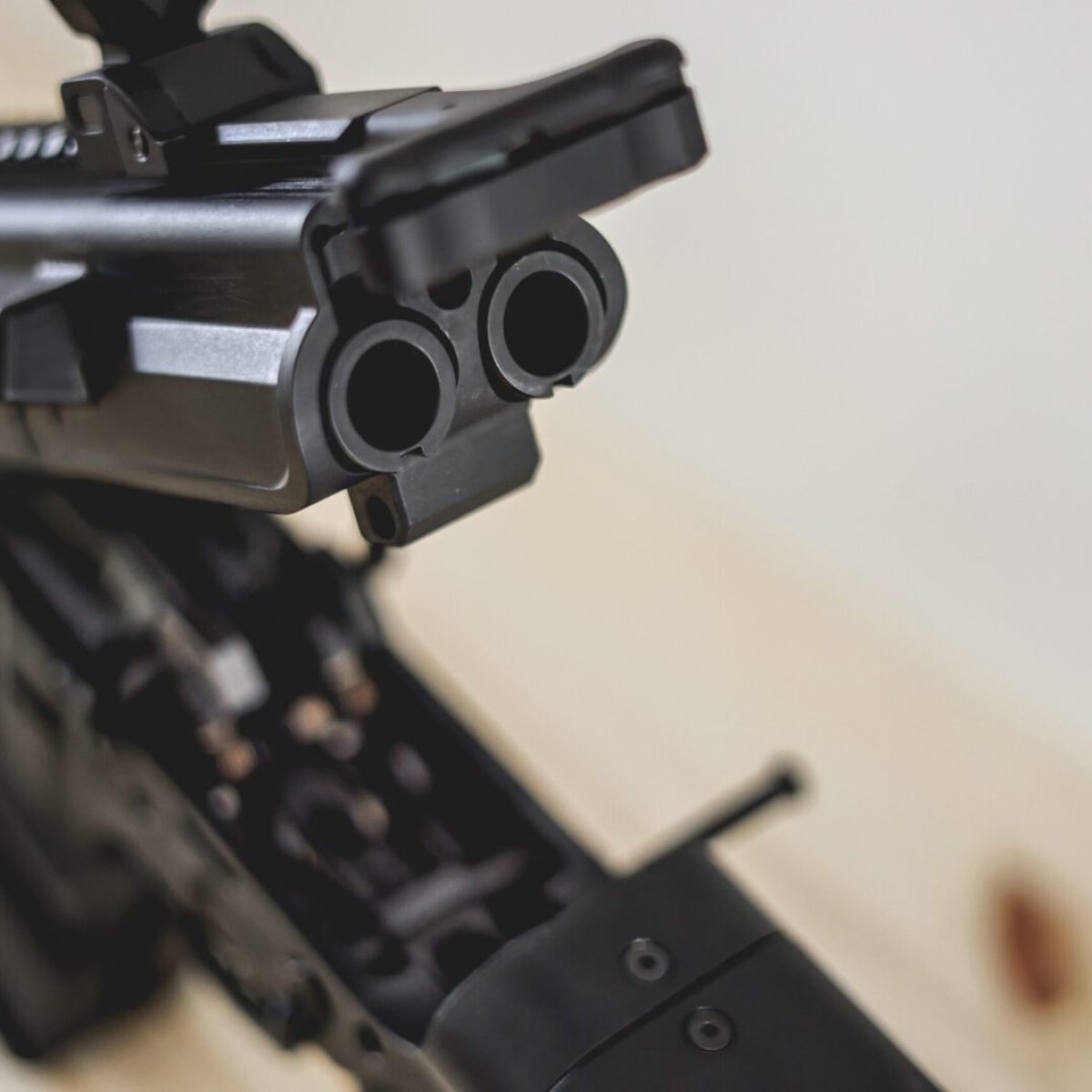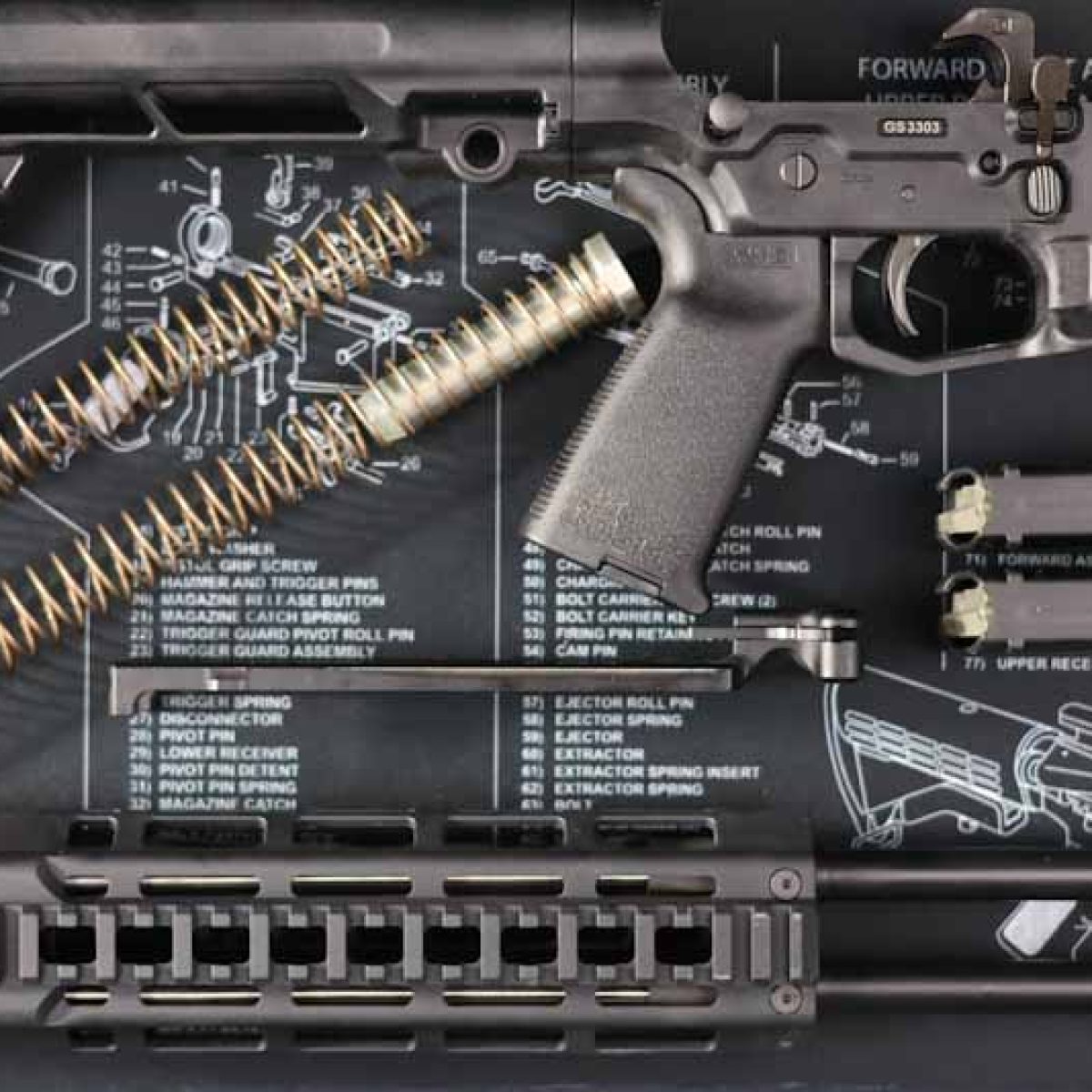Home » Blog » AR15 » AR15 Charging Handles: Enhancing Your Firearm’s Performance and Ergonomics
AR15 Charging Handles: Enhancing Your Firearm’s Performance and Ergonomics
Introduction In the hands of a skilled marksman, the AR15 is more than just a rifle; it’s a precision tool that demands every component perform at its peak. At the heart of this performance, the charging handle stands out as a critical yet often underestimated element. This key piece is where the action begins, enabling […]
share article

Introduction
In the hands of a skilled marksman, the AR15 is more than just a rifle; it’s a precision tool that demands every component perform at its peak. At the heart of this performance, the charging handle stands out as a critical yet often underestimated element. This key piece is where the action begins, enabling the shooter to chamber the first round, clear any obstructions, and ensure the rifle is battle-ready. Its design, ergonomics, and material choice are crucial, tailored to meet the demands of rigorous use and enhance the shooter’s control and efficiency. A well-selected charging handle transforms the AR15, optimizing its functionality and reliability, and reinforcing the rifle’s status as a pinnacle of firearm engineering. In the world of firearms, excellence and durability are paramount.

Understanding the AR15 Charging Handle
At the core of the AR15’s functionality, the charging handle plays an indispensable role that goes beyond its simple mechanics. This integral component is the initial point of interaction for the operator, providing the necessary leverage to manually cock the rifle, chamber a round, and ensure the firearm is primed for operation. It’s not merely a tool for loading; the charging handle also grants the shooter the ability to quickly address malfunctions and perform critical safety checks, ensuring the AR15 remains a reliable extension of its user in every scenario. With every pull, the charging handle engages directly with the rifle’s internal systems, a vital action that sets the stage for the performance and reliability expected from a firearm bearing the Silver-Shadow mark.
In crafting the AR15, the charging handle embodies the precision and attention to detail that Silver-Shadow stands for. Designed to meet the rigorous demands of both tactical operators and shooting enthusiasts, it reflects a balance of functionality, durability, and ergonomic efficiency. Whether it’s standard, ambidextrous, or enhanced with specialized features for improved grip or reduced gas blowback, each charging handle variant is engineered with the user’s utmost efficiency in mind. This focus ensures that every engagement with the AR15 charging handle is intuitive, swift, and seamlessly integrated into the firearm’s operation, reinforcing the rifle’s status as a tool of unmatched reliability and performance.
The Evolution of Charging Handles
The evolution of the AR15 charging handle reflects the firearm’s journey from a military service rifle to a ubiquitous platform for civilian, law enforcement, and military use worldwide. This progression underscores innovations in ergonomics, materials, and user requirements, adapting to the changing needs and technologies of shooters and operators.
Origins and Early Designs
The AR15, initially designed in the late 1950s by Eugene Stoner for Armalite, featured a charging handle located inside the carrying handle on the top of the rifle. This design was directly inherited from its predecessor, the AR10. This “T”-shaped charging handle required the operator to reach over the rifle to cock it, a method that was suitable for the time but later evolved due to tactical considerations and user feedback.
Transition to the Rear
With the adoption of the M16 (a military adaptation of the AR15) by the United States military, the charging handle was relocated to the rear of the receiver. This change marked a significant shift in design, improving ergonomics and making it easier for shooters to charge the rifle without altering their stance or grip significantly. This rear placement has remained standard, serving as the basis for future innovations and enhancements.
The advent of Ambidextrous and Enhanced Handles
As the AR15 platform gained popularity among civilian shooters and saw diverse use in military and law enforcement contexts, the demand for more user-friendly features grew. This led to the development of ambidextrous charging handles, allowing left-handed shooters or those operating in unconventional positions to manipulate the rifle more easily. Enhanced handles with larger latches also became popular, providing a better grip and facilitating operation with gloves or under stress.
Material and Technological Advancements
The evolution of charging handles also reflects advancements in materials and manufacturing technologies. Early models, primarily made from steel or aluminum, have been joined by options featuring lightweight, high-strength polymers, and advanced alloys. These materials offer reduced weight without compromising durability, catering to the modern shooter’s preference for lighter and more maneuverable firearms.
Customization and Specialized Designs
Today, the AR15 charging handle is a hotbed of customization and innovation. Designs tailored for suppressed shooting, high-volume firing, and extreme environmental conditions demonstrate the charging handle’s critical role in the firearm’s overall functionality and user satisfaction. Manufacturers and aftermarket specialists continually explore new features, such as gas redirection, anti-snag contours, and color customization, further embedding the charging handle as a key element for personalization and performance enhancement of the AR15.
The evolution of the AR15 charging handle from a simple manual cocking device to a sophisticated, user-focused component illustrates the platform’s adaptability and the firearms community’s drive for improvement. Each development phase reflects a deeper understanding of operator needs, pushing the boundaries of what the AR15 can achieve while maintaining its core principles of reliability and efficiency.
Types of AR15 Charging Handles
Standard Charging Handles:
Standard charging handles for the AR15 are the foundational design that set the precedent for all subsequent innovations in charging handle technology. Characterized by their simplicity and effectiveness, these charging handles are designed with a basic “T” shape, featuring a latch on the left side that, when pressed, releases the handle to slide back and facilitate the cocking of the rifle. Made primarily from durable materials like aluminum, standard charging handles are lightweight yet robust, ensuring reliability without adding unnecessary weight to the firearm. Their straightforward design is geared towards right-handed shooters, offering a no-frills approach to rifle operation. While lacking the ambidextrous capabilities or enhanced features of more specialized models, standard charging handles remain a popular choice for their proven performance, ease of use, and compatibility with a wide range of AR15 models. They represent the essence of AR15 functionality, providing an efficient and direct method for preparing the rifle to fire, clear malfunctions, or perform safety checks.
Ambidextrous Charging Handles:
Ambidextrous charging handles for the AR15 are designed to accommodate a broader range of shooters, providing equal functionality and ease of use for both left-handed and right-handed operators. These handles feature latches on both sides, allowing the rifle to be charged from either the left or the right with equal efficiency. This design is particularly advantageous in tactical situations or for shooters who prefer or require the flexibility to operate their rifle from various positions. Ambidextrous charging handles are a testament to the evolution of firearm ergonomics, offering enhanced accessibility and promoting smoother, faster operation under diverse conditions.
Crafted from high-strength materials such as advanced aluminum alloys, these charging handles maintain the durability and reliability expected from AR15 components while incorporating a more inclusive design. The ambidextrous feature is not just about accommodating left-handed shooters; it’s also about providing tactical versatility, enabling seamless transitions between hands and improving overall weapon handling in dynamic shooting environments. As the AR15 platform continues to adapt to the needs of modern shooters, ambidextrous charging handles stand out as a critical upgrade for those seeking maximum functionality and operational flexibility from their rifles.
Extended Latch Charging Handles:
Extended latch charging handles for the AR15 enhance the standard charging mechanism by featuring a larger, more pronounced latch, making it significantly easier to grasp and operate. This design modification is particularly beneficial for shooters wearing gloves or those who require quick, reliable action under stress or in adverse conditions. The extended latch provides a greater surface area and leverage, allowing for a more robust and secure grip on the handle, facilitating rapid and efficient charging of the rifle with minimal effort.
Constructed from durable materials to withstand the rigors of heavy use, these charging handles merge functionality with user-centric design, maintaining the lightweight and resilient characteristics inherent to AR15 components. The extended latch design is a direct response to the operational needs of competitive shooters, military personnel, and law enforcement officers who demand quick accessibility and ease of use from their firearms. By offering an improved interface between the shooter and the rifle, extended latch charging handles significantly contribute to the overall performance and handling of the AR15, ensuring that readiness and responsiveness are always within reach.

Installation Tips and Maintenance
Certainly! Changing out the charging handle on an AR15 is a straightforward process that can be performed safely and efficiently with some basic understanding of the rifle’s assembly. Here’s a brief guide to help you replace the charging handle:
Safety First
- Ensure the Rifle is Unloaded: Before beginning any work on your firearm, make sure it is completely unloaded. Remove the magazine and check the chamber to ensure there are no rounds present.
- Clear Your Workspace: Have a clean, well-lit area to work in, free from ammunition and distractions.
Disassembly
- Separate the Upper and Lower Receivers: Push out the rear takedown pin and pivot pin located on the lower receiver. Once these pins are disengaged, you can separate the upper receiver from the lower receiver.
- Remove the Existing Charging Handle and Bolt Carrier Group (BCG): Pull the charging handle slightly to the rear, which will also bring the bolt carrier group with it. You’ll need to pull both out together. First, remove the bolt carrier group by pulling it out of the upper receiver, and then slide the charging handle back until it stops, lift it up slightly to clear the notch it sits in, and then slide it out completely.
Installing the New Charging Handle
- Insert the New Charging Handle: Align the new charging handle at the opening at the rear of the upper receiver. Slide it in, ensuring that the lugs on the sides of the handle are aligned with the tracks inside the upper receiver. Push it forward until it sits securely in place, but do not fully seat it into its final position yet.
- Reinsert the Bolt Carrier Group: With the new charging handle partially inserted, slide the bolt carrier group back into the upper receiver. Ensure that the gas key on the bolt carrier group aligns and enters the channel on the underside of the charging handle. Once the bolt carrier group is fully seated, push the charging handle forward into its final position.
Reassembly
- Rejoin the Upper and Lower Receivers: Align the upper receiver with the lower receiver and reinsert the pivot and takedown pins to secure them together.
- Function Check: Perform a safety check to ensure that the rifle operates correctly. This includes pulling the charging handle to ensure it moves freely and locks the bolt back if necessary.
Safety Reminder: Always handle firearms with care and follow all safety protocols. If you’re unsure about any step or if it’s your first time handling firearm components, consider seeking assistance from a professional gunsmith.
Conclusion
The AR15 charging handle, a quintessential yet often understated component, plays a pivotal role in the rifle’s operation and ergonomics. From its humble beginnings to the modern battlefield and shooting ranges, the evolution of the charging handle mirrors the AR15’s journey towards versatility and precision. Innovations such as ambidextrous designs, extended latches, and advancements in materials have catered to a wide array of operational needs, making the charging handle not just a functional piece but a testament to the firearm’s adaptability. These developments underscore the AR15’s standing as a tool of unmatched reliability, tailored to meet the exacting demands of tactical operators, law enforcement, and shooting enthusiasts alike.
Installation and maintenance of the AR15 charging handle, while straightforward, underscore the importance of meticulous handling and knowledge of the firearm’s assembly. Ensuring the rifle is unloaded and working in a clear, well-lit space are preliminary steps that safeguard the operator during the installation process. The choice of charging handle—be it standard, ambidextrous, or with an extended latch—further enhances the AR15’s performance, marrying functionality with ergonomic design. As the AR15 continues to evolve, so too does the charging handle, evolving into a component that significantly impacts the firearm’s operational efficiency and user experience.
